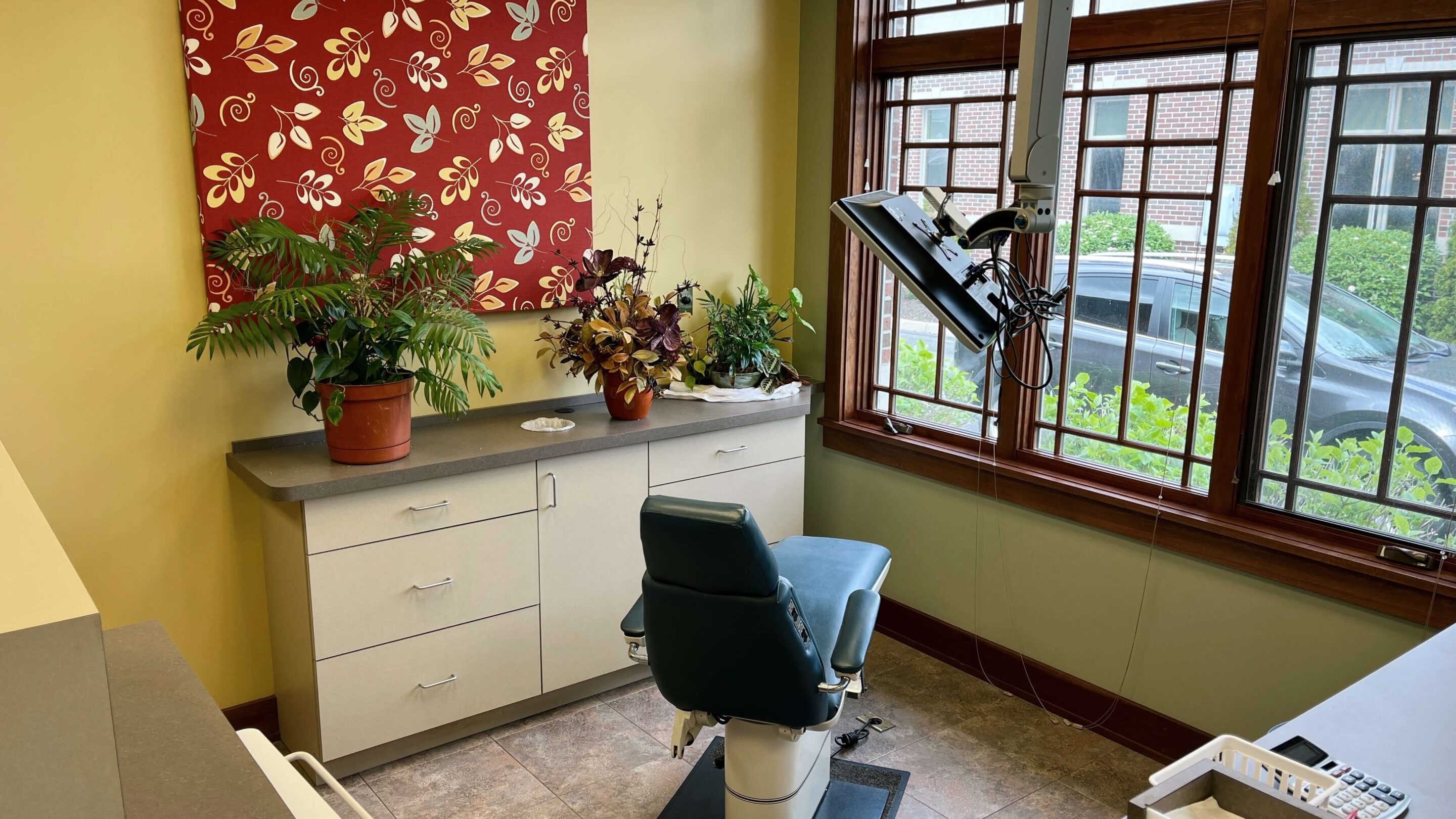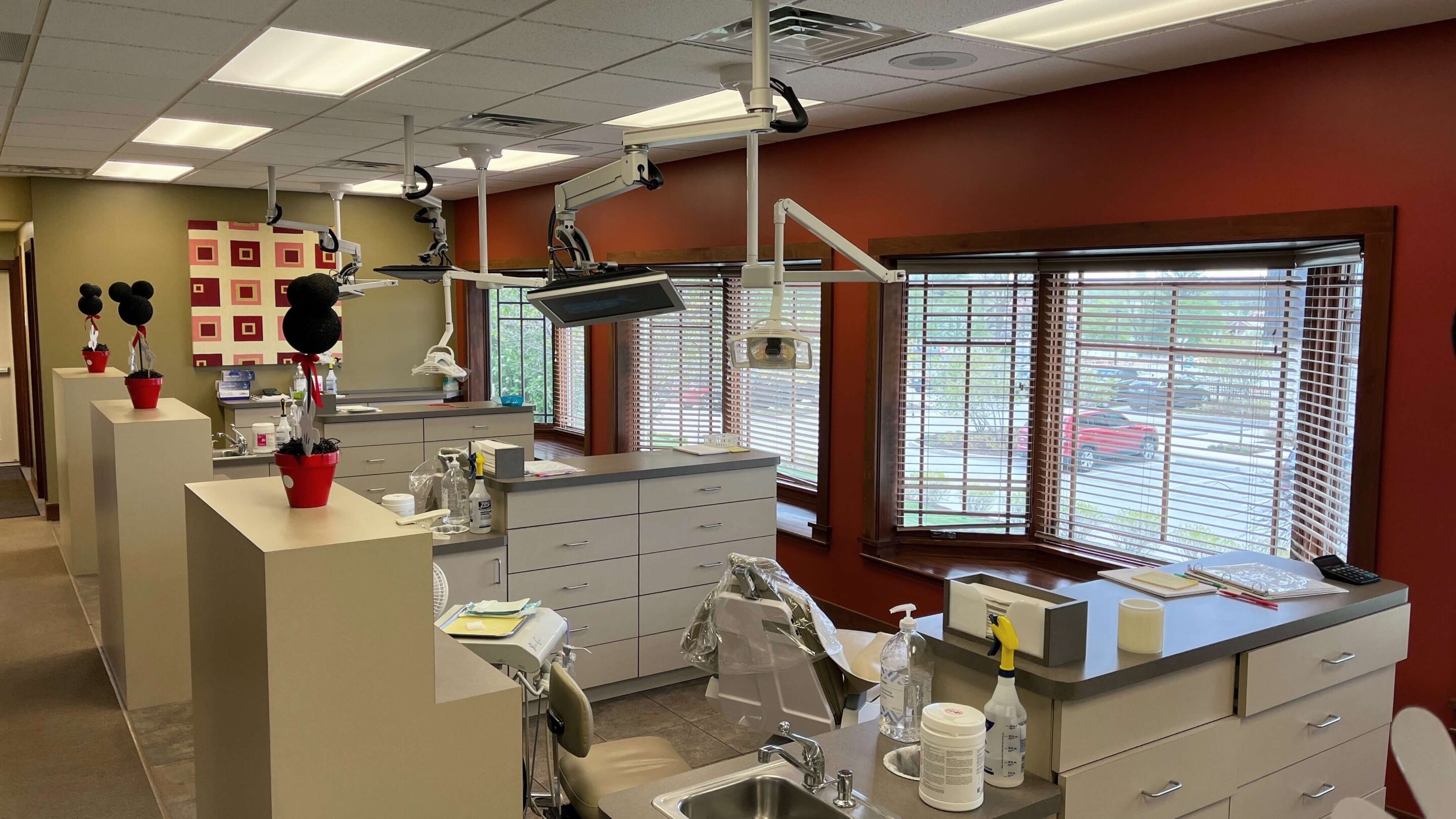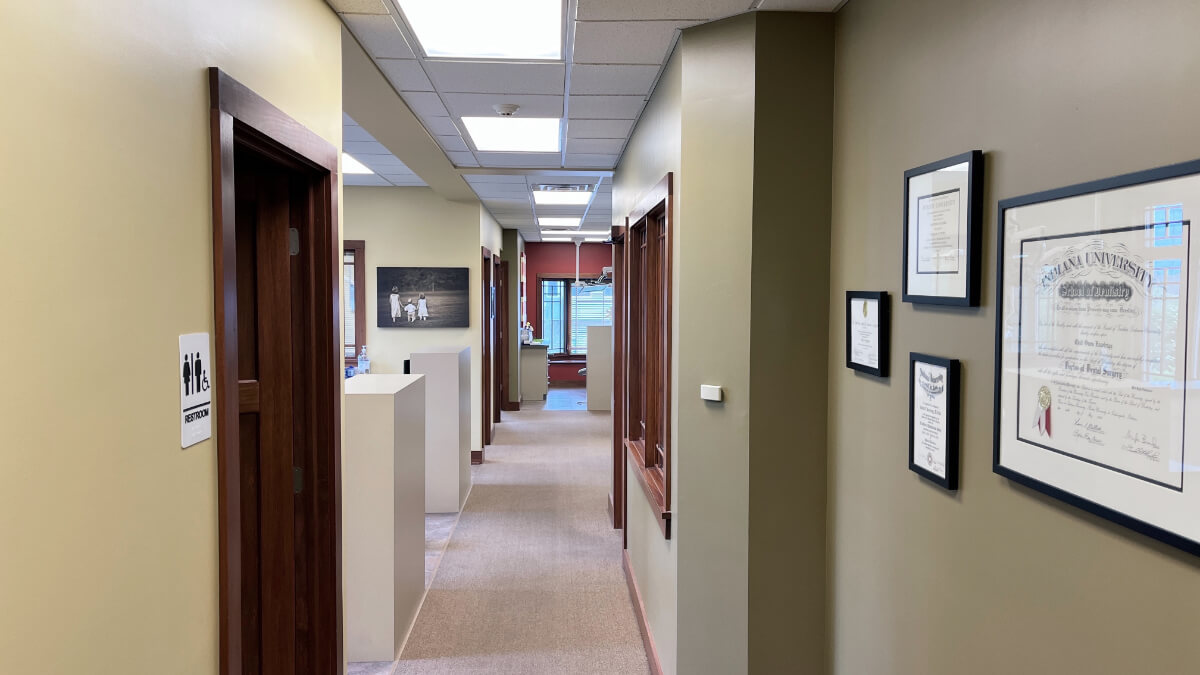Sedation Dentistry Options for Our Patients
For various reasons, some patients might benefit from sedation dentistry. There are two types of sedations we offer: conscious and unconscious. Conscious sedation includes nitrous oxide gas administered over the patient’s nose. During conscious sedation, the patient is awake and can be stimulated. General anesthesia is when a patient is completely unconscious. General anesthesia dentistry is completed at a nearby out-patient surgery center and administered in our office by a licensed dental anesthesiologist.
Nitrous Oxide
What is Nitrous Oxide?
- Nitrous oxide, or “laughing gas”, is an inhalation anesthetic and the most common form of sedation utilized by our patients every day. This form of minimal sedation is anxiolytic, where a patient remains awake and can interact, but is often more relaxed. Patients often report feeling light-headed and giddy.



Why is Nitrous Oxide used?
- We encourage patients that have some anxiety or nervousness prior to a procedure to utilize the nitrous oxide gas. Nitrous oxide has many benefits and can be easily titrated to a level specific for each patient with a quick onset and offset. The nitrous oxide does not eliminate pain, but it might make discomfort less noticeable. Local anesthetic might still be utilized during a procedure to numb the treated area.
How is Nitrous Oxide administered?
- The nitrous oxide gas is breathed through a nasal mask. We have various bright colors of “noses” and different sizes to insure an adequate seal. When breathing exclusively through the nose, the effects are typically noticed almost immediately. The most common side effects of breathing in nitrous oxide are dizziness or nausea. At the end of a procedure, the gas is switched to 100% oxygen so that any remaining nitrous oxide is flushed out of the system and the patient returns to feeling “normal” to help minimize these side effects.
Who benefits from Nitrous Oxide?
- Patients that have dental anxiety, a strong gag reflex, or just want to feel more relaxed during a dental procedure benefit from Nitrous Oxide usage. As an anxiolytic, it is very effective in relieving stress.
Where to get Nitrous Oxide?
- Nitrous Oxide is offered in each of our dental operatory rooms prior to any treatment. Our rooms are often reserved for dental treatment so that a patient can be comfortable without any distractions from other patients.
I.V. Sedation
What is I.V. sedation?
- I.V. sedation, or intravenous sedation, is a type of general anesthesia where a patient is put to sleep via various medications delivered directly to the bloodstream. All dental treatment is completed while the patient is in this deep sleep. The patient is breathing on their own and can respond to stimuli but will not feel pain nor have memory of the procedure.
Why is I.V. sedation used?
- I.V. is a much stronger conscious sedation than nitrous oxide. It is the strongest form of sedation medication we use in the dental office. This type of sedation allows a safe way to complete any treatment in which a patient would not willingly tolerate treatment in the chair being awake and alert.
How is I.V. sedation administered?
- An anesthesiologist and nurse come to the office to handle all of the sedative aspects while we as dentist focus on the dental treatment. The anesthesiologist will often start by giving the patient midazolam, which is a liquid taken orally. Midazolam has a near immediate onset to cause drowsiness, decrease anxiety, and decrease memory. Once the midazolam kicks in, the anesthesiologist will then place a very thin needle into a vein near the surface of the skin, usually the arm. Medications are then administered intravenously to make sure the patient stays comfortable and in a twilight sleep. The most common medication utilized is Propofol, which can be given in doses throughout the procedure dependent on the patient’s needs.
Who benefits from I.V. sedation?
- I.V. sedation may be used for various reasons. For example, if a patient has several teeth that need treated which would require multiple appointments to complete. With I.V. sedation, all treatment is completed in one appointment so that the patient leaves essentially cavity-free.
When is I.V. sedation recommended?
- I.V. sedation might be recommended during a new patient consultation, a routine prophy visit, or during an operatory appointment if the treatment was unable to be completed due to the patient’s anxiety. If an I.V. sedation recommendation is made, the dentist will speak with the parent/guardian in depth about why this sedation would be best suited for their child. The dentist will also review a tentative comprehensive treatment plan. A staff member will then discuss finances and answer any further questions in a consultation room before scheduling the procedure.
Where to get I.V. sedation?
- I.V. sedation is completed right in our office. The anesthesiologist team will bring all their own equipment to set up in one of our operatory rooms. During the procedure, the parents are encouraged to wait in the waiting room for the entire duration. The patient will then be able to go home shortly after all treatment is completed and all post-operative instructions have been discussed.
General Anesthesia
What is General Anesthesia?
- General anesthesia is an unconscious sedation, which is the deepest form of sedation possible. This type of sedation takes place in a hospital.
Why is General Anesthesia used?
- The hospital is the safest option reserved for patients with the greatest needs. Those needs may include a significant medical history or a large amount of rampant dental caries. With General anesthesia taking place in a hospital setting, there is an expert team of nurses and doctors caring for your child. The patient will be completely still throughout the duration of the procedure and will not feel any pain.
How is General Anesthesia administered?
- An unconscious state is first achieved with the patient either breathing through a breathing mask in the operating room and then placing an I.V. line to administer medicine, or by placing the I.V. initially if the patient will tolerate it. A tube is then inserted into the airway to ensure proper breathing. The patient is essentially breathing “through the tube”, but all vitals will be monitored throughout the procedure.
Who benefits from General Anesthesia?
- This type of sedation allows a safe way to complete all treatment at once in which a patient would not willingly tolerate treatment in the chair being awake and alert. If a special requires extra precautions due to a medical history, the hospital is the preferred setting with a team of medical experts. Another reason might be if a patient has several teeth that need treated which would require multiple appointments to complete. With general anesthesia, all treatment is completed in one appointment so that the patient leaves essentially cavity-free.
When is General Anesthesia recommended?
- General anesthesia might be recommended during a new patient consultation, a routine prophy visit, or during an operatory appointment if the treatment was unable to be completed due to the patient’s anxiety. If a general anesthesia recommendation is made, the dentist will speak with the parent/guardian in depth about why this form of sedation would be best suited for their child. The dentist will also review a tentative comprehensive treatment plan. A staff member will then answer any further questions in a consultation room before scheduling the procedure.
Where to get General Anesthesia?
- General anesthesia sedation is administered in a hospital setting. Our office utilizes an out-patient surgery center nearby where the dentist and a dental assistant will go to. The anesthesia team will already be at the hospital to take care of all sedation aspects while we focus on the dentistry.
Professional Accreditations






